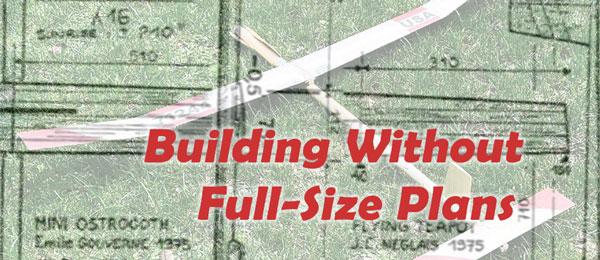Written by Dennis Norman
As featured in the March 2014 issue of Model Aviation.
Photo from Power Tool Geekery at http://www.flickr.com/photos/toolstop/5354918980/ by Mark Hunter, licensed under Creative Commons
Power tool pointers
A. For all tools: Read and understand operating instructions before using!
B. Post this in your workshop for ready reference.
C. Specific safety reminders:
1. Keep work area clean. Cluttered areas and benches invite accidents.
2. Avoid dangerous environments. Do not use power tools in damp or wet locations. Keep work area well lit.
3. Keep children away. All visitors should be kept a safe distance from work area.
4. Store idle tools: When not in use, tools should be stored in a dry, high, locked-up place, out of reach of children.
5. Do not force tools. They will do a better and safer job if used at the rate for which they were designed.
6. Use the right tool. Do not force a small tool or attachment to do the job of a heavy-duty tool.
7. Wear the proper apparel. Don’t wear loose clothing or jewelry that can become caught in moving parts. Always wear shoes in the workshop. Make use of rubber gloves, face masks, and ear plugs as circumstances dictate.
8. Use safety glasses. With most tools, use safety glasses to protect your eyes against airborne debris.
9. Do not abuse cords. Never carry tools by their cords or yank them to disconnect them from receptacles. Keep cords from heat, oil, and sharp edges.
10. Secure your work. Use clamps or a vise to hold work. It is safer than using your hands and it frees both hands to operate tools.
11. Do not overreach. Keep proper footing and balance at all times.
12. Maintain tools with care. Keep tools sharp and clean for the best and safest performance. Follow instructions for lubricating and changing accessories.
13. Disconnect tools. Disconnect when not in use, before servicing, and when changing accessories such as blades, bits, cutters, etc.
14. Remove adjusting keys and wrenches. Form a habit of checking to see that keys and adjusting wrenches are removed from tools before turning them on.
15. Avoid accidental starting. Do not carry plugged-in tools with your finger on the switch. Be sure the switch is off when tools are plugged in.
D. Saws
1. Keep guards in place and in working order.
2. Keep blades sharp.
3. Keep hands away from the cutting area.
E. Grinders
1. Keep guards in place.
2. Only use grinding wheels with the safe speed at least as high as the no load rpm marked on the tool’s name plate.
3. Wear safety glasses.
*Based upon recommendations by Dremel.
SOURCES:
Dremel
(800) 437-3635
www.dremel.com
Trimming a Triplane or Taming the Stall
by Doug McHard (UK)
Republished from the May/June 2010 Tailspin newsletter; based upon Alex Imrie’s “Vintage Corner” in the June 1994 Aeromodeller, via Maxfax.
The Fokker triplane has a bad reputation as a free flight model, being reputedly almost impossible to trim. One of the oldest myths in scale modeling circles is that the Fokker triplane tailplane is mounted at a positive (lifting) angle. It certainly appears to be so in scale drawings of the machine, but look again!
The tailplane is mounted at a positive angle in relation to the datum line, but not in relation to the wings. The wings have a thick, heavily under cambered section, and the zero-lift line runs through the section at an angle to the datum greater than that of the tailplane. Thus, the tailplane actually has a slight negative aerodynamic angle of incidence in relation to the wing! Please leave it that way. If the tailplane angle is reduced, the resulting excessive down-load from the large area and long moment arm produces a stalling trim that is generally impossible to iron out.
The design has two other features that contribute to its bad stalling reputation. The height of the top wing above the thrust line produces a lot of drag high up, and this gives a strong nose-up force. In addition, the closeness of the big propeller to the short-span wings produces a disproportionate lift increase from the slipstream when under power.
The high angle of incidence of the wings presents a lot of undersurface to the slipstream, and if any attempt is made to correct a power stall by adding down thrust, the immediate effect is to blow even more high speed air across the wings and thus counteract the intended effect of the down thrust! The greater the power needed for flight the greater is this effect.
A Fokker triplane must be built light to be successful. The balance point should be well forward: no more than 50% of the top wing center-section chord. Avoid over-size propellers, and ensure that no more than 2 degrees of decalage is used (the difference between the wing zero-lift line and the tailplane.) All three wings should be mounted at the same angle of incidence. Reducing the angle of the lower wing(s) increases the stalling tendency.
The little 12-inch wingspan Megows triplane model is a perfectly practical demonstration piece of what is stated above. Build it exactly to the plan and notice the tailplane setting—slightly positive to the datum line. My experience is that this little model flies quite well, but I do build with 1/20-inch sq. (not 1/16-inch sq.) and I do add a spar to the wings on the top surface. If you can build and cover it without warps without the spars, so much better. One final point—the use of minimum decalage means that you must be careful not to incorporate too tight a power turn (right), otherwise there is insufficient elevator correction to prevent the nose from dropping. Much of the above also applies to the Fokker D-7 and the Fokker D-8.










Comments
Add new comment